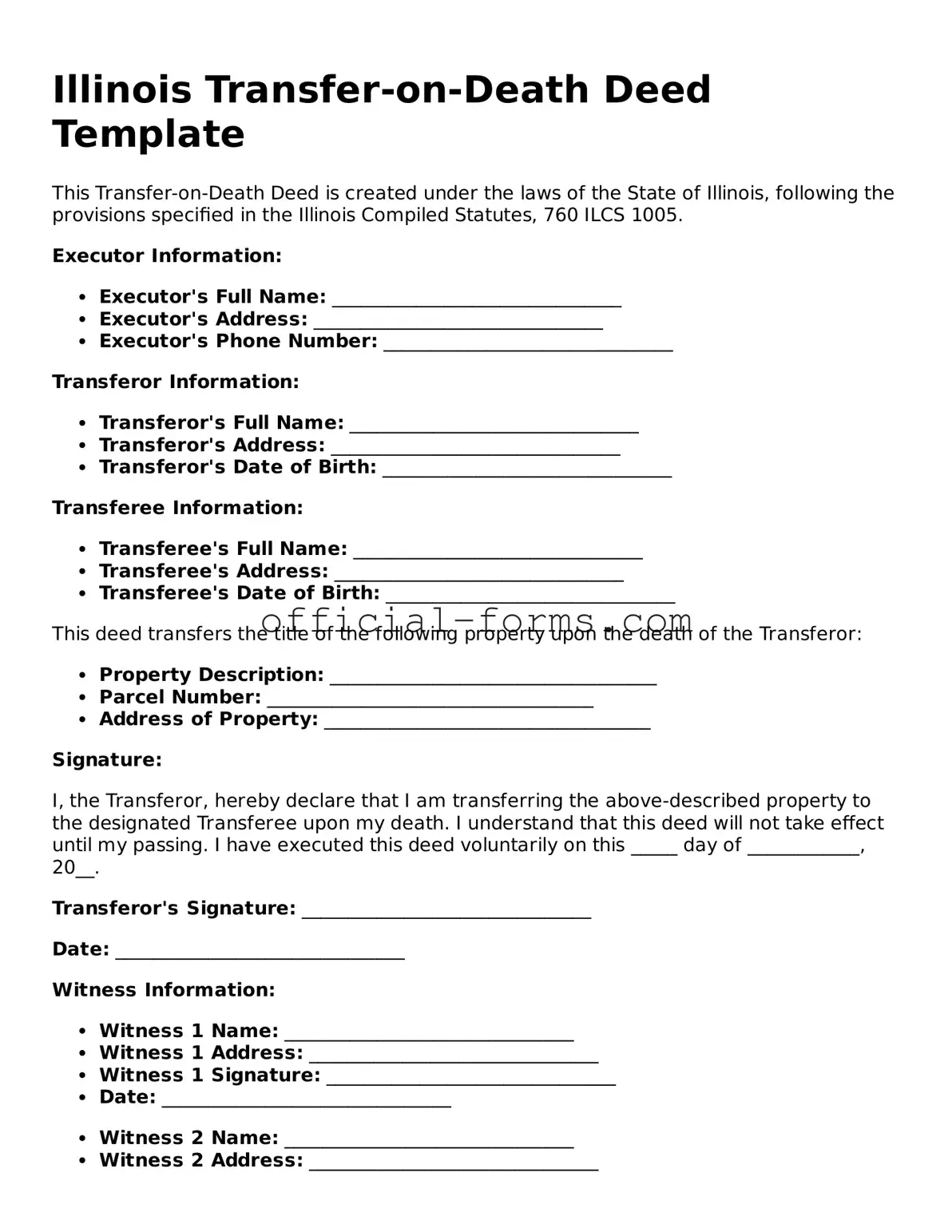Filling out the Illinois Transfer-on-Death Deed form can be a straightforward process, but many individuals make mistakes that can lead to complications in the future. One common error is failing to properly identify the property. It is essential to provide a complete legal description of the property being transferred. This includes the address and any relevant parcel numbers. Omitting these details can create ambiguity, which may lead to disputes among heirs.
Another frequent mistake involves the naming of beneficiaries. People often list beneficiaries without considering the implications of their choices. It is important to name individuals who are capable of managing the property. Additionally, listing multiple beneficiaries without specifying how the property will be divided can result in confusion and potential conflicts later on.
Signatures are critical on the Transfer-on-Death Deed form, yet many individuals overlook this requirement. All parties involved must sign the document in the presence of a notary. Failing to have the deed notarized can render it invalid. This is a crucial step that should not be skipped to ensure that the deed is legally binding.
Another mistake relates to the timing of the deed's execution. Individuals sometimes fill out the form but delay in recording it with the appropriate county office. The deed must be filed before the property owner's death to be effective. Delaying this process can lead to the deed being challenged or deemed ineffective.
People also tend to forget about updating the deed after significant life events, such as marriage, divorce, or the death of a beneficiary. These changes can affect the validity of the deed and the distribution of the property. Regularly reviewing and updating the deed can help prevent unintended consequences.
In some cases, individuals fail to consider the tax implications of transferring property via a Transfer-on-Death Deed. While this method can simplify the transfer process, it does not eliminate potential tax liabilities. Understanding these implications can help individuals plan more effectively for their heirs.
Lastly, individuals may neglect to communicate their intentions to family members. Open discussions about the Transfer-on-Death Deed and its implications can help prevent misunderstandings and disputes among heirs. Transparency is key to ensuring that everyone is on the same page regarding the distribution of assets.
